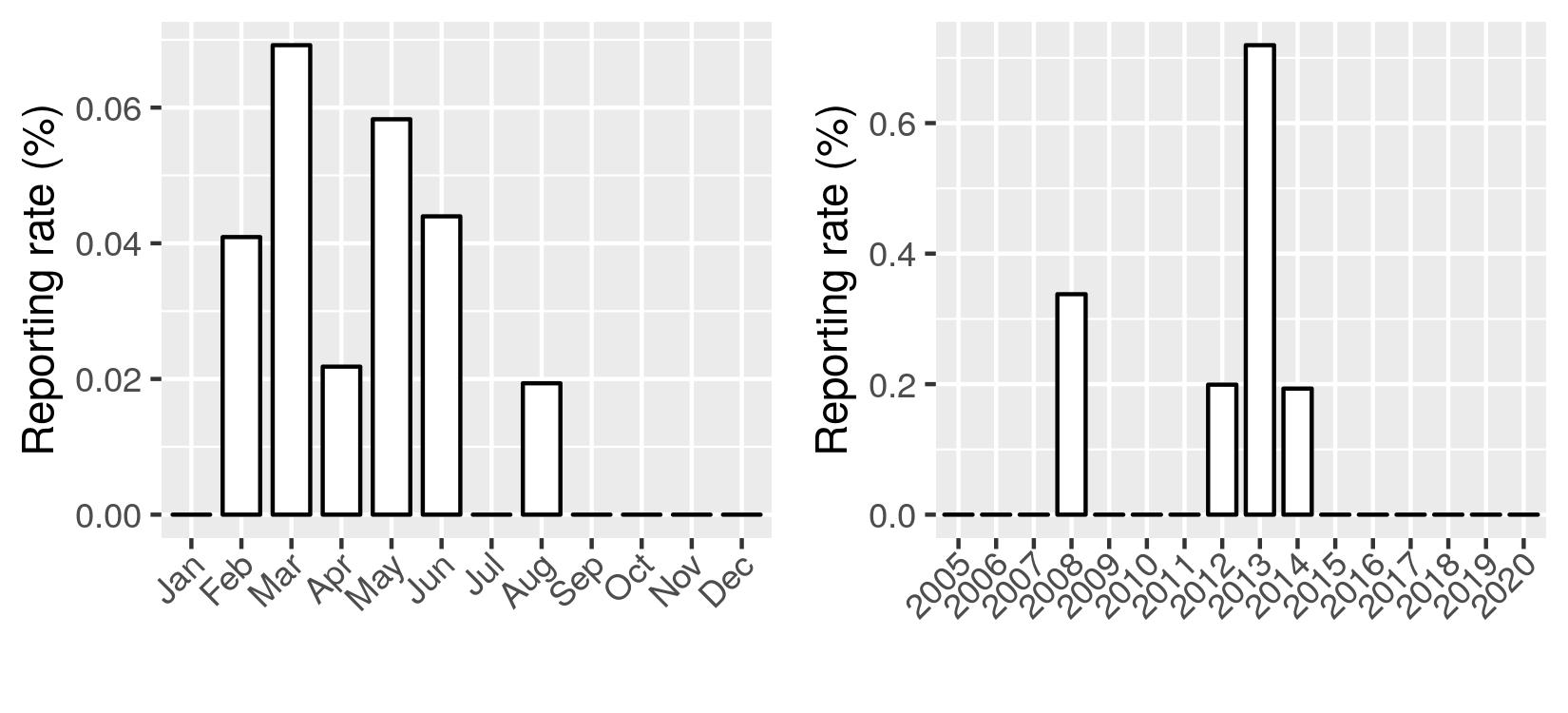Hoary-headed Grebe Poliocephalus poliocephalus
Category A; Vagrant.

Rare vagrant to Brisbane region. Only a handful of records, widely scattered across all seasons, and further birds could presumably turn up anywhere at any time. Not of conservation concern.
| Threat status | Brisbane status |
|---|---|
| IUCN Least Concern | eBird records 61 |
| National Not listed | Atlas squares 11 |
| Queensland Not listed | Reporting rate 0% |
Brisbane’s rarest species of grebe, the Hoary-headed Grebe is a rare vagrant to our region, with only a couple of dozen records to date. Birds are quite similar to non-breeding Australasian Grebes, so care must be taken when reporting this species to ensure no mis-identifications. Records are widely spaced geographically and temporally, although a spate of records from 2012-2014 is interesting and warrants further investigation.

Widespread across much of Australia, the Hoary-headed Grebe is a rare vagrant to the Brisbane region, with very few records, barring a few well-twitched individuals. Birds are mostly solitary, with only a couple of records of multiples; the high count in Brisbane is of seven birds at Kedron Brook Wetlands in 2013 (Wells 2013b). Birds have been reported widely across the year, but appear to be most likely over autumn.
Distribution and Habitat
Hoary-headed Grebes have been reported widely across the city, from Sandgate in the north east to Moggill and Lake Manchester in the south west. Most, if not all, records are from large waterbodies with plenty of fringing vegetation, suggesting this species is possibly not as well-adapted to urban living as the Australasian Grebes is, which would go some way to explaining this species’ local scarcity. Further birds could therefore presumably turn up anywhere there is suitable habitat for them.
Seasonality and Breeding
As noted above, there are records of Hoary-headed Grebes from all seasons, although the majority of reports thus far have come over autumn, from about mid-February to June. This is probably partly due to the widespread twitching of a couple of autumn-arriving individuals (e.g. at Prior’s Pocket in 2013 or Sandgate in the same year), and partly a result of some seasonal variation displayed by this species’ movements around the broader SEQ region. It would be good to collect more records for this species to determine the factors behind any regular or nomadic movements.
Trends
As this species is only a rare visitor to Brisbane, no clear temporal trend to its abundance in Brisbane is present, a strong period from 2012-2014 is noteworthy. The species is not of any conservation concern as the population is very widely distributed across eastern Australia and numbers are stable across the range.
Information Gaps
- Collect more records for this species
- Determine the provenance of any Brisbane records
- Determine the factors leading up to birds moving into the city
Key Conservation Needs
- Protect remnant wetlands
Contributors to Species Account
Louis Backstrom
References
Wells D (2013b) eBird Checklist: http://ebird.org/view/checklist/S15302562.